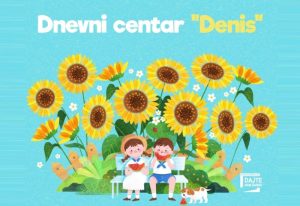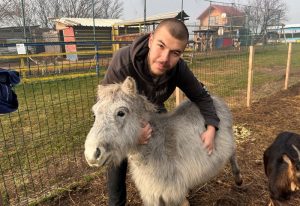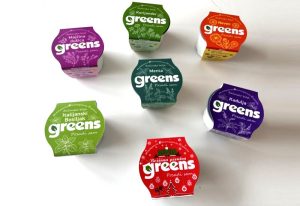About a hundred people, of which ten herders with as many as five thousand sheep, are residents of the highest populated place in Bosnia and Herzegovina, an authentic and preserved Bosnian village, Lukomir. In this national monument and cultural landscape at almost 1,500 meters above sea level, ancient and modern ways of life collide, but far from the achievements of civilization.
Locals will say: “This is us, this is ours, this is Bosnia!” And tourists? There are many more of them, but the least domestic ones. They come from all over the world and admire the beauty.
Hoxha for sevap
Halil Čomor is also the owner of a flock of about 300 sheep. He says he is a cattle breeder by profession, because that’s what he lives on. However, he is also a local hodja in this village, but as he explains – for sevap. He stays in Lukomir, like his neighbors, from May 1 to the end of October. And before the snow covers the mountain, everyone descends to the lower regions.
“This is a place that God gave so that it is ideal for cattle breeding, for small and even large cattle, during the six months that we will be here”, assesses the hodja, who takes care of his sheep with his wife.
This type of animal husbandry, in his opinion, is not a job for new generations, it is serious and difficult, and young people live an instant culture. “A peasant cannot be instant, a peasant must be a peasant either he is or he is not. No instant. It is a hard life, indeed, but also a beautiful life. I wouldn’t change, these are my choices after all”, Halil is clear.
In addition to animal husbandry, Lukomir is also ideal for rural tourism, which cannot exist without local producers of meat, milk and cheese, as well as vegetables. Because, as this hodja explains it – what’s the point if you’re not going to harvest from the garden and make soup and serve it to tourists.
Homemade food
And the restaurateurs in “Summer Garden” know best what visitors are looking for. In the 11 years that they have existed, from a few tables in front of the house, they have reached 100 seats in a now representative building and 32 sleeping beds. Mina’s pie is already widely known, and the lamb is superb. But the offer is much bigger.
“From the standard, most popular pies under the sach, to veal, lamb, ushtipki, various stews, standard old Bosnian cuisine that has been used since time immemorial in Lukomir,” Nersid Malseša, the owner of this restaurant, tells us.
Before and during the war, this village had 500 inhabitants, and there was also an elementary school. For the last 12 years, no one stays here for the winter.
“The last time they stayed, eight people, most of them were the old population, it was when there was a lot of snow in Sarajevo, when nothing was working and then they brought medicine and food to them by helicopter and dropped them off, and since then no one has stayed “, says this restaurateur.
But that’s why in the lower regions, during the winter period, they prepare for the first spring days when they go out to Lukomir again. This is evidenced by Saima Čomor, who attracts the curious eyes of tourists with her showcase of handicrafts. Popes, socks, sweaters, ribbons, paths… everything is made of domestic wool.
“As for these handicrafts, I don’t have time to do it in the summer because I work in the garden, I work in the house, I always have guests, I have two rooms we rent out, so I want to please them. But that’s why I prepare wool in the summer and spend the winter knitting. So when I come here, I’m done,” explains Saima for Agroklub.

She knits in the winter, sells in the summer – everything is made of domestic wool
And the products, as he explains, are bought by those who need them. The prices of thick woolen socks are between five and 10 marks. A cheerful, smiling and vital housewife, she says that the nature that surrounds her is responsible for her appearance.
“I’m active because I’m in Lukomir, and if I were in Hadžići I wouldn’t be. And, now I’m going to say honestly, I don’t know if you believe me, I’m 63 years old, those are the years since Lukomir.”
There is everything but Bosnians
And really, you’ll hardly come across a grizzly here, except maybe in the two films that were filmed here – “Summer above the landscape” and “Gluhi barut”, but that’s the least talked about. Is it due to the climate or some magic, who will know?!
But thousands of tourists flock here every year. Our famous photographer Dženad Džino has been a guide for Poles for the second year. In his group of mountaineers are engineers, doctors, nature lovers….
Tourists in the most remote and saturated place in Bosnia and Herzegovina
“This type of tourism, I think it is our future, the future of BiH for sure. There are more and more tourists, here you see today Czechs, Poles, Italians, there are quite a few of them. I haven’t met any Bosnians yet, apart from the host here, here’s you too”, tells us Džino, whom we find with a group that has walked for three days from Umoljan to this most remote inhabited place in the country.
How did cheese, honey and wild horses save a city threatened by the exodus?
A complaint can be found only up to this village, and that is the road, which is disastrous from whichever side you come from – from Konjic or Sarajevo. It is almost impossible to pass without an SUV.
Tito’s bunker
Geographically, Lukomir belongs to Konjic and it is not the only attractive location it can boast of. It is known as a city of rich cultural and historical heritage, and the most visited facility is the Atomic War Command (ARK D-0), better known as Tito’s bunker.
“Only in 2022, the facility was visited by over 26,000 tourists, the highest interest is of course tourists from the former Yugoslavia, especially from Slovenia, who are somewhere around 50 percent of all visitors to the facility,” says Eldin Bubalo, project manager at the Development Agency “Prvi Korak”.

“Tourism is in all strategic documents of the city,” says Bubalo
And there is also the Neretva, on which the widely known rafting has developed, then the Jablaničko and Boračko lakes, which provide tourists with refreshment in the warm months.
“Konjic is also known for its sheep’s cheese, which is very popular among tourists, we also have trout from our Neretva, we have a pond from before the war that has a long tradition, including these small private ones,” adds Bubalo.
Known for woodworking
In a city known for its metal industry and woodworking, tourism has come to the fore in recent years and is included in all strategic documents. Since 2019, there is also a museum of wood carving, a tradition that has been present in this area for more than 100 years. Nikšići and Mulići are the two families most often associated with it.

All the museum collection is actually brought here by the residents, says Rajić
“The most interesting thing we have is the original lid from one of the first woodcarvers from the Konjic municipality, Ilija Logarić, and the second perhaps most interesting thing we have is a photo of the former president of all 6 republics, Josip Broz Tito, holding a box that was given to him for the time of his visit to Sarajevo in 1977,” states Maja Rajić, curator of the Wood Carving Museum in Konjic.
The entire museum collection is actually brought here by the residents of this city, and these are all things that have passed through the hands of equestrian woodcarvers. The entrance fee is 5 KM per person, while it is free for children.
Source: akta.ba





